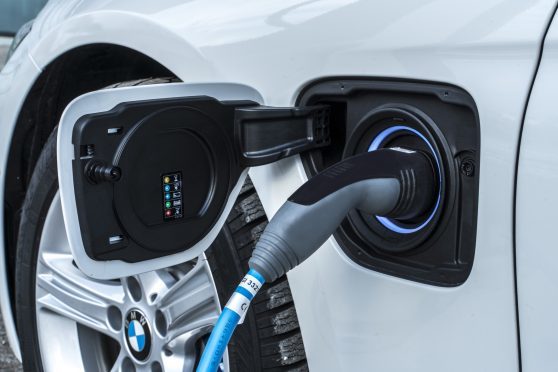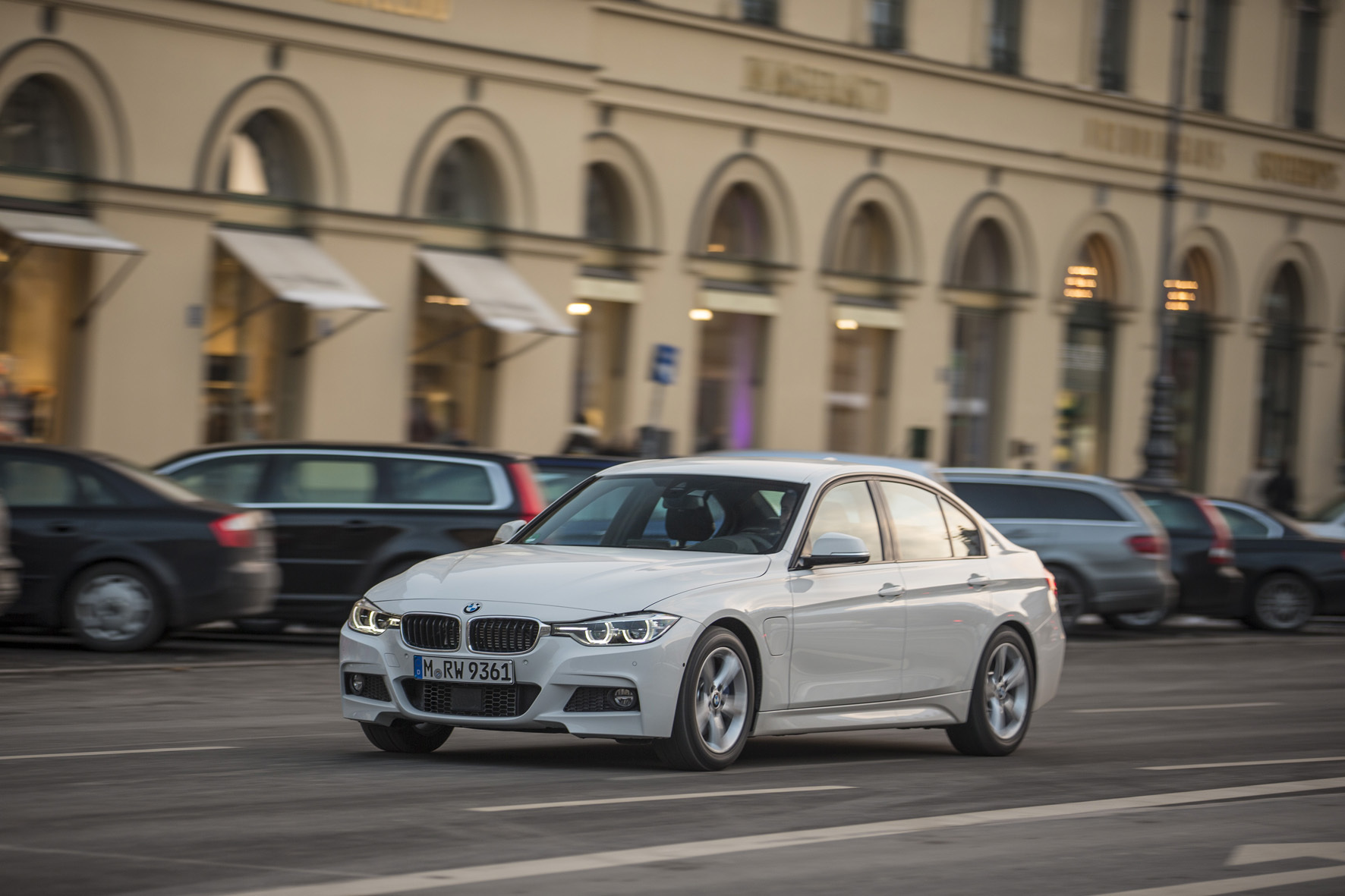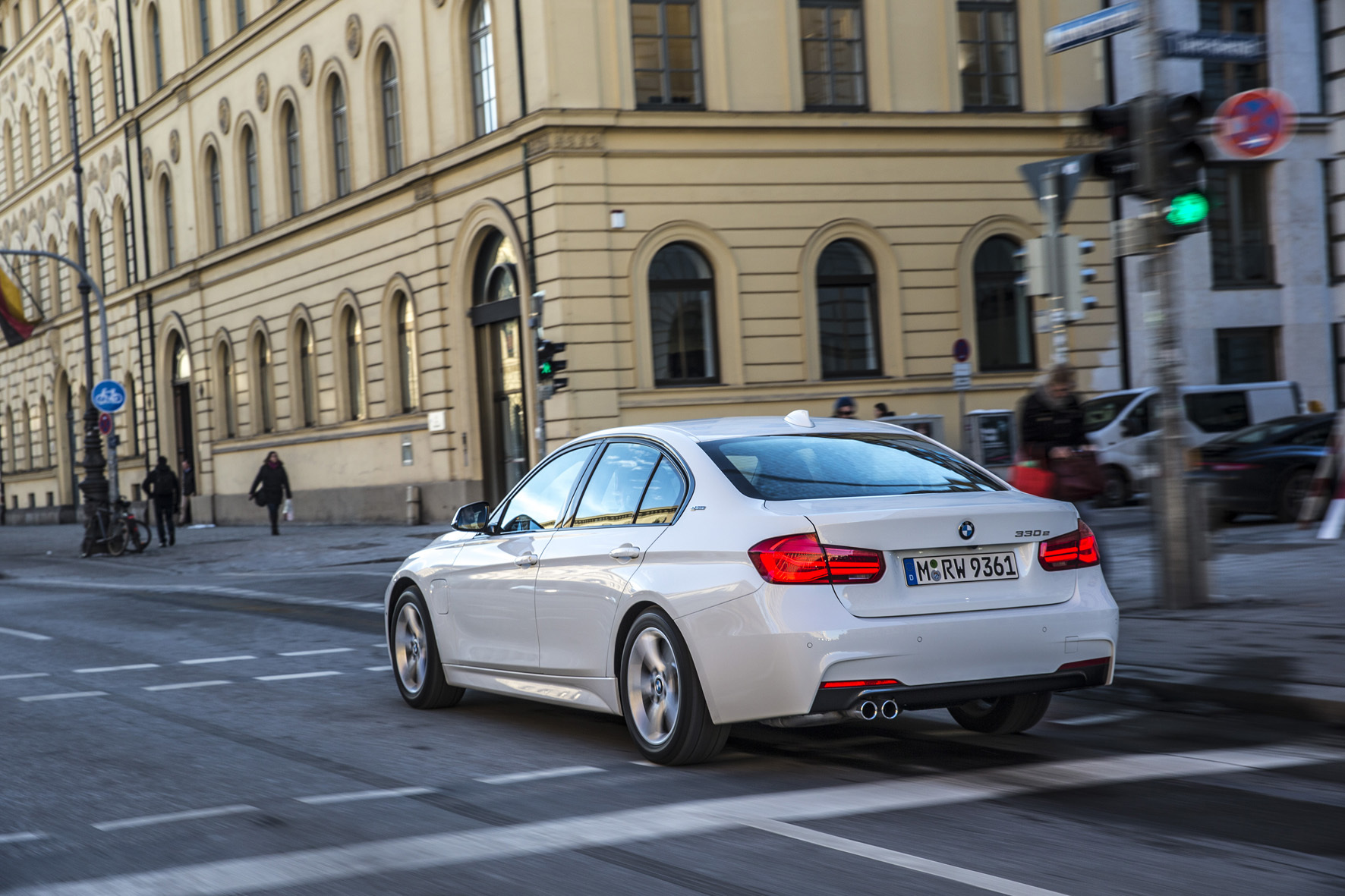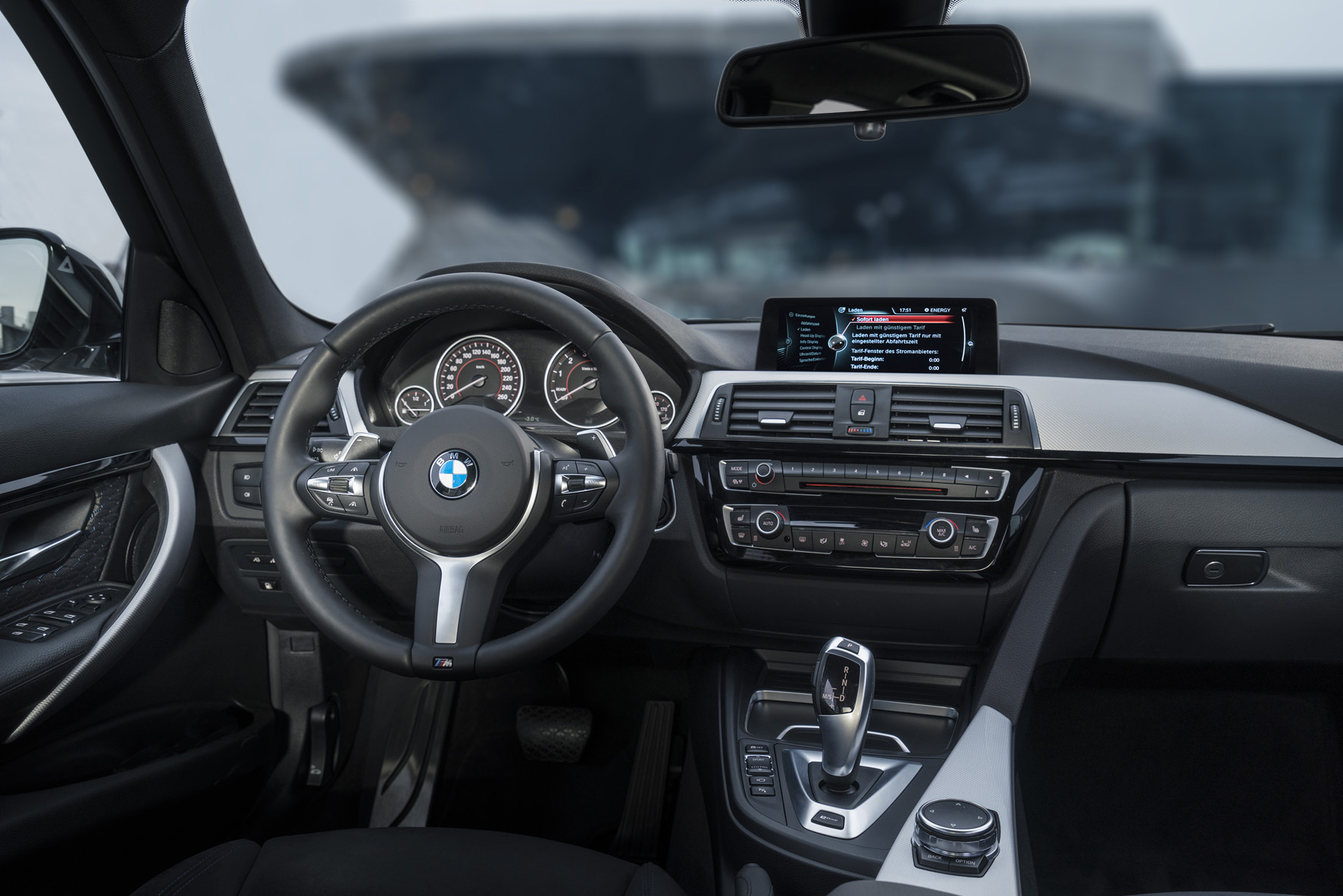Can Munich’s motorway muncher compete in the hybrid age after decades of diesel dominance?
There were concerns that BMW would ruin the 3 Series by offering a hybrid version, as if they were planning to put a steam engine in Concorde. People thought it would be slow, boring, and deeply unsexy.
Then BMW plundered the i8 parts bin, engineered a rear-wheel-drive hybrid powertrain with only 165kg of additional weight, and somehow retained the driving dynamics of the original. And they’ve done all of this in a muscular, masculine body, inadvertently creating the best-looking plug-in hybrid on the road.
It doesn’t hurt that the BMW badge is one of the most desirable
of the mainstream manufacturers. It also doesn’t hurt that a muted grey saloon stands out amongst the increasingly garish backdrop of crossovers and SUVs that form the bulk of British traffic these days.
The standard colour is “Alpine white” which will swiftly become “Suburban Grey” or “Ploughing Season Brown” depending on your driving habits. The pearly greys look smart and will hide grub for longest in the real world (or anywhere other than the clean and tidy streets of Bavaria).
The 330e isn’t as flexible as these SUVs and crossovers, though. BMW won’t be making an estate version any time soon – a decision that will limit its family appeal. Hybrid gets 370 litres of boot space, meaning that long loads need to be wedged in diagonally. Charging the battery takes two or three hours, depending on the source.
For a saloon, the 330e is absolutely fine. If you’re looking for extra space you could look at the excellent Mitsubishi Outlander PHEV, or almost any other hybrid car. The 330e is still designed primarily as a driver’s car.
And in that context, the 330e competes with the 320d in terms of speed and alacrity. The powertrain lays down 252bhp in a more immediate way than the petrol or diesel versions. I took it to autobahn speeds and was very happy, so motorway commuters should have no problems cruising at 70mph. It’ll reach 62mph in just over six seconds – faster than the 320d but slower than the 330d.
Around town, the fully-electric mode is as relaxing as it is efficient. If you like the idea of low-emission tyre squeal, you’ll enjoy the 330e’s attitude. You can drive it on zero-emissions fully-electric power for around 20 miles, theoretically, although there are dozens of reasons why this distance could drop significantly. But people with their own charging points and short commutes could find themselves visiting petrol stations every six weeks rather than every few days.
One of the main downsides to the 330e is the price. Coming in comfortably over £30,000, even with a government grant, the entry-level, cloth-upholstered 330e seems like quite bad value. Buyers could spend similar cash on the larger and more flexible Mitsubishi Outlander PHEV, or buy a new diesel 3 Series for £10,000 less. You’ll struggle to find any hybrid car that drives this well, though, or that looks as good on the drive.
BMW has a startlingly specific buyer profile for the 330e. He or she lives in a suburban area and commutes around half an hour each way every day. On the weekends he or she will drive much longer distances, often at speed. He or she has a charging point at home and at work. This sounds immensely German, and while it worked flawlessly when I drove it on a mock-up route through Munich and the surrounding area, it doesn’t translate into British particularly well.
The 330e is a brilliant driver’s car for anyone with a charging point at home or at work. Most others would be better off in a diesel – for now.
THE FACTS
Model: BMW 330e SE
Price: From £33,935 (not including current £2,500 grant)
Engine: Petrol-electric hybrid powertrain producing 252bhp and 310lb/ft
Performance: Top speed 140mph, 0-62mph in 6.1 seconds
Economy: 148.7mpg
CO2 emissions: 96g/km



